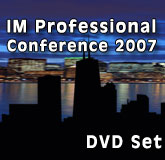|
Incorporate core:tx
® neuro into your practice
Overview
The
core:tx
® is a new performance based feedback system
designed to facilitate somatosensory (proprioception)
awareness and stimulate motor control and planning
of almost any part of the body.
The
core:tx
® is a software and hardware system that interfaces
with a patient, giving him or her real time
information based on the position and movement of
selected joints in space. At the same time this
system provides the clinician with valuable
objective data on the patient’s performance and
abilities.
Over
the years, Occupational and Physical Therapists have
been trying to find new ways to treat neuro-muscular
deficits. The
core:tx
® is designed for patients suffering from neurological
disorders that respond well to the game like programs.
By
providing multi-sensory feedback based on movement
quality, therapists may be able to maximize the
performance-based feedback and repetition to
establish and reinforce new or existing motor
patterns.
These
neuro-muscular patterns form an important part in
stroke rehab, peripheral motor control training and
muscular imbalance training.
Stroke Rehab:
The
core:tx
® provides an environment where the patient
interacts with the program forcing them to make
constant adjustments that facilitate the
communication and problem solving needed to develop
new motor pathways. By providing multi-sensory
feedback based on his or her performance and the
ability to practice functional movements, the
potential for neuroplasticity is enhanced.
Motor Control:
In the absence or limitation of motor
control, the visual and auditory information
provided by the
core:tx
® assists the patient in making real time
adjustments that help retrain the brain and
peripheral joint receptors. By improving the
efficacy of these and other receptors (somatosensory
receptors), the patient learns how to control the
affected joint and muscles with greater accuracy.
Joint Stability (Muscular Balance):
The
core:tx
® provides the patient the opportunity to engage
muscles in response to the visual and auditory
feedback provided by the program. By incorporating
somatosensory information the patient learns how to
control muscle initiation and intensity. Thus
developing functional muscle balance and stability
around one or multiple joints
What makes the Core:Tx ®
Different?
The
Core:Tx ® has a
unique game like format of feedback
that offers the following benefits:
-
The ability to measure and track functional
range of motion. As well as measure the quality
of functional motor control
-
It provides an environment where the patient is
cognitively involved.
-
It keeps the patient engaged and motivated
through many repetitions.
-
It provides real time audio and visual feedback
that can compensate for a potential lack in
other feedback (proprioception) needed for motor
learning.
-
Ease of use and versatility allow the therapist
to simulate and measure the patient’s ability to
perform functional movements.
Who will benefit from Core:Tx ®
treatment?
The
patients that would benefit from the Core:Tx ®
treatment program can be divided into three separate
groups.
-
Central Nervous System Damage
-
Stroke
-
Traumatic Brain Injury
-
Other Central Nervous System
impairments (tumors, MS, etc.)
-
Loss of Motor Control
-
Traumatic Nerve Damage
-
Compression Nerve Damage
-
Peripheral Neuropathy
-
Loss of Proprioception due to
Injury or Joint Replacement
-
Joint Stability Disorders
-
Post Surgical Muscle
Imbalance
-
Muscle Imbalance due to
Injury
The
Core:Tx ® is versatile with 14 pre-selected
movements and the ability to add any new movements
of functional motor patterns that can be used to
facilitate neuro-muscular control and carry-over to
functional task performance and at the same time
measure this progression.
Cost: $1895
Includes: Base station,
Transceiver, USB Cable, Three AAA batteries, Six straps & one
strap extension, Software
installation CD, Core:Tx
®
user guide, &
Core:Tx
®
quick start guide
Call 877-994-6776 to
Order today
|







